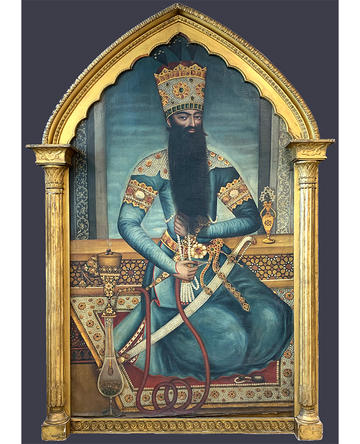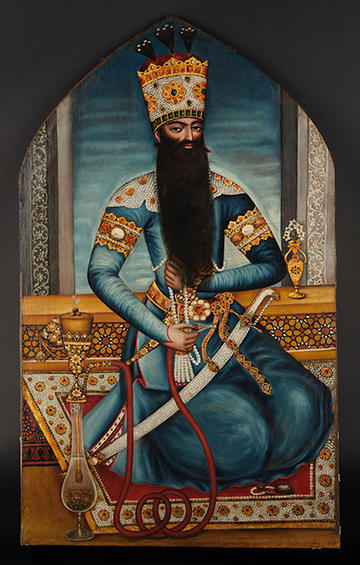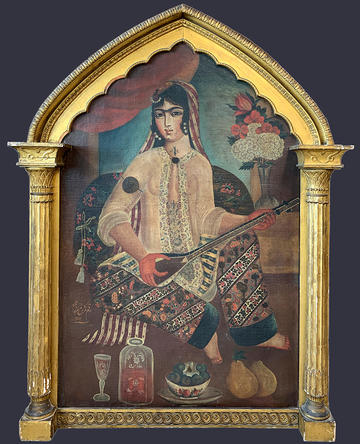QAJAR PORTRAITS PROJECT
Expanding the canon of early Qajar portraiture: a multidisciplinary study of two paintings in Oxford collections
About the research project
The project has three objectives: the first is the treatment and restoration of both canvasses to stop deterioration and improve future access. Both pictures have been in storage since their transfer from the Indian Institute to the Bodleian Libraries in the 1960s.
A second, related goal, is the acquisition of data concerning the pigments and oil technique used on the paintings, which will be uniquely exposed once the surface varnish is removed. This will be done through a series of non-invasive techniques, including X-ray Fluorescence, X-ray Diffraction, Raman Spectroscopy and Fibre Optic Reflectance Spectroscopy with a view to compare and enrich available datasets.
While a number of scientific analyses of pigments have been undertaken on Persian oil paintings in recent decades, in fact, much remains to be reconstructed about the technical characteristics of Iranian painting methods, as much as about the economy of raw materials supporting it.
Some of the questions that this project will pursue are: were materials sourced and obtained locally? Are they natural or synthetic? How were they worked and applied? If synthetic, how do they relate to the ones produced at the end of the 19th century in Europe and is it possible that they were imported from there? If so, through what channels? Was the oil technique the same as the one used in contemporary Western portraiture? If so, how was knowledge exchanged before the formalisation of art training in 1851 in the academy of the Dar al-Funun?
Finally, the authorship and context of production of Fath Ali Shah’s portrait and the circumstances surrounding the creation and transfer of both pictures from Iran to the UK will be reconstructed. Were the pictures actually acquired together by East India Company civil servant Edward Scott-Waring or was the royal portrait obtained through a different channel given the exclusive nature of its subject?




Far left: Kneeling Portrait of Fath Ali Shah Qajar, c.1910-1920, oil on canvas. Left: Fath Ali portrait after conservation. Right: Setar Player, signed Mirza Muhammad, 1797-1798, oil on canvas. Far right: Analysing the Setar Player painting. Both portraits transferred from the Indian Institute to the Bodleian Library
Answering these questions will enrich current knowledge of Fath Ali Shah’s portraiture, but also help scholars to re-assess the dynamics of knowledge exchange and commercial interaction between Iran and the West in the early 19th century.
Project funders
- The British Institute of Persian Studies
- The Pilgrim Trust
- The Flora Family Foundation
- The Persian Heritage Foundation
- The Yadiran Foundation
- Anonymous Donors
Project dates
2023-2025
Project team
Principal Investigator:
Co-investigators:
- Jevon Thistlewood
- Dr Daniel Bone
- Dr Tea Ghigo
- Dr Virginia Llado-Buisan
- Dr Mike Webb
- Dr Kate Fulcher
- Professor Andrew Beeby
- Dana Josephson
Research connections
Outputs
Exhibition coming in 2025




